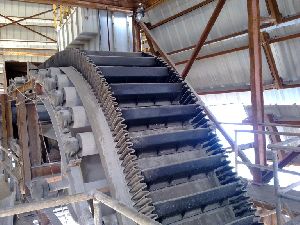
steep angle conveyor
Devcon System’s Steep Angle Conveyors are not limited to 15 or 20 degrees inclination like a conventional in-plant belt conveyor. They can lift the material from zero degrees horizontal to 90 degrees vertical. In vertical applications the belt can even twist and discharge the material in a different direction. Urethane Cleats or pockets carry the material between special corrugated sidewalls. The specially designed reinforced belt has extra cross rigidity that is necessary on the return side. In 1988 Devcon Systems provided some of the first Steep Angle Conveyors ever designed and installed in India and south east Asia for large mining projects. We have continued to develop this technology to meet the challenges of higher tonnage and higher lift applications. “Devcon’s” Steep Angle Conveyor Belts are modern age Bucket Elevator Box Belts. These Belts are made with Cleats and Sidewall. The concept of steep angle betls is to carry materials on steepest angle upto 90 degree with zero spillage These belts can be driven at the speed upto 3 M/sec. The space requirement is quite less as compared to Conventional Belts. Base Belt plays a key role in Steep Angle Conveyor Belts, The base belts are made with special cross rigid Member design to get more stability and rigidity.
...more
Stacker Machine
A Stacker is a large machine used in bulk material handling. Its function is to pile bulk material such as limestone, ores and cereals on to a stockpile. A reclaimer can be used to recover the material. Stackers are nominally rated for capacity in tonnes per hour (tph). They normally travel on a rail between stockpiles in the stockyard. A stacker can usually move in at least two directions: horizontally along the rail and vertically by luffing (raising and lowering) its boom. Luffing of the boom minimises dust by reducing the distance that material such as coal needs to fall to the top of the stockpile. The boom is luffed upwards as the height of the stockpile increases. Some Stackers can rotate the boom. This allows a single stacker to form two stockpiles, one on either side of the conveyor. Stackers are used to stack in different patterns, such as cone stacking and chevron stacking. Stacking in a single cone tends to cause size segregation, with coarser material moving out towards the base. In raw cone ply stacking, additional cones are added next to the first cone. In chevron stacking, the stacker travels along the length of the stockpile adding layer upon layer of material. Stackers and reclaimers were originally manually controlled, with no means of remote control. Modern machines are typically semi-automatic or fully automated, with parameters remotely set. The control system used is typically a programmable logic controller, with a human-machine interface for display, connected to a central control system. Other than stacking, a stacker has three basic movements: Luffing: This is vertical movement. Stackers use either a winch mechanism with metal wire, or hydraulic cylinders, generally two. Winch mechanisms are highly reliable compared to hydraulic actuators and remain widely used, particularly in large stackers. Travelling: The stacker moves on a rail track, which may be broad or narrow gauge, enabling it to move around the stockyard as required. For this purpose, traction motors powered by direct current (DC) are connected by bevel gears to between 12 and 22 wheels. For manual control, all the controls are in a controller’s cabin above the boom conveyor or boom. Modern Stackers can be controlled remotely. Slewing: This is rotation of the stacker around its central axis to align or place the stockpile where required. This works mostly by a slew pinion that rotates around a slew base. This type of gear assembly is called a sun and planet gear. The axles may be multiple and are driven by DC-powered axle motors which transmit the torque via bevel orhelical gears.
...more
Screw Conveyor
Shafted Screw Conveyors are used in thousands of industrial applications every day for efficiently conveying a variety of bulk materials. A screw conveyor’s main function is to transfer bulk materials from one process to another. Screw conveyors are very cost-effective and require minimal maintenance to operate. Ideal for handling dry to semi-fluid materials– free-flowing to sluggish Cost-effective when compared to other conveying devices such as belt, pneumatic or aero-mechanical conveyors Efficiently distributes bulk materials to various locations using multiple inlet and discharge points Totally enclosed for corrosive or hazardous requirements Devcon Screw Conveyors are available in many configurations. Screw Conveyors are designed based on industry standards and are modular in construction providing flexibility for a variety of applications. Screw Conveyors can be operated with the flow of material inclined upward. When space allows, this is a very economical method of elevating and conveying. As the angle of inclination increases, the capacity of a given unit rapidly decreases. The rotating part of the conveyor is sometimes called simply an auger.
...more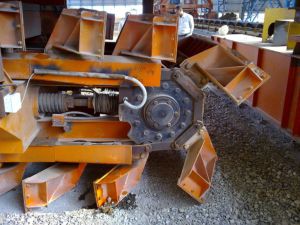
reclaimer
A Reclaimer is a large machine used in bulk material handling applications. A reclaimer’s function is to recover bulk material such as ores and cereals from a stockpile. A stacker is used to stack the material. Reclaimers are volumetric machines and are rated in m3/h (cubic meters per hour) for capacity, which is often converted to t/h (tonnes per hour) based on the average bulk density of the material being reclaimed. Reclaimers normally travel on a rail between stockpiles in the stockyard. A bucket wheel reclaimer can typically move in three directions: horizontally along the rail; vertically by “luffing” its boom and rotationally by slewing its boom. Reclaimers are generally electrically powered by means of a trailing cable. All Types Of Reclaimers The Reclaimer structure can be of a number of types, including portal and bridge, named according to this type, such as “Bridge reclaimers”. Portal and bridge reclaimers can both use either bucket wheels or scrapers to reclaim the product. Bridge type reclaimers blend the stacked product as it is reclaimed..
...more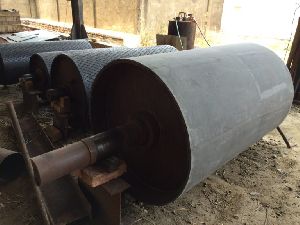
Pulley
We have many standard pulleys available in both A or B style, one or two grooves, bushed or bored to size. We specialize in made-to-order pulleys for the agricultural industry. Devcon Systems manufactures pulleys for both light and heavy duty mowers.
...more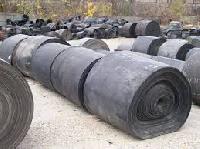
Conveyor Belt Scrap
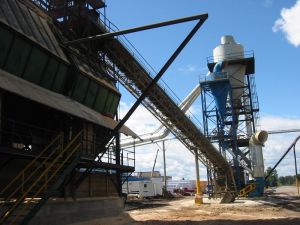
Chain Conveyor
A Chain Conveyor is a type of conveyor system for moving material through production lines. Chain Conveyors utilize a powered continuous chain arrangement, carrying a series of single pendants. The chain arrangement is driven by a motor, and the material suspended on the pendants are conveyed. Chain conveyors are used for moving products down an assembly line and/or around a manufacturing or warehousing facility. Chain Conveyors are primarily used to transport heavy unit loads, e.g. pallets, grid boxes, and industrial containers. These conveyors can be single or double chain strand in configuration. The load is positioned on the chains, the friction pulls the load forward. Chain Conveyors are generally easy to install and have very minimum maintenance for users. Many industry sectors use chain conveyor technology in their production lines. The automotive industry commonly uses chain conveyor systems to convey car parts through paint plants. Chain Conveyors also have widespread use in the white and brown goods, metal finishing and distribution industries. Chain Conveyors are also used in the painting and coating industry, this allows for easier paint application. The products are attached to an above head Chain Conveyor, keeping products off of the floor allows for higher productivity levels. All Types Of Chain Conveyors Manufacturing Devcon provide a full range of conveyor systems which are designed to increase efficiency in material handling. Using En-Masse MoveMaster technology, Devcon Systems provide comprehensive material handling systems.
...more
Bucket Elevator
A Bucket Elevator can elevate a variety of bulk materials from light to heavy and from fine to large lumps. A centrifugal discharge elevator may be vertical or inclined. Vertical elevators depend entirely on the action of centrifugal force to get the material into the discharge chute and must be run at speeds relatively high. Inclined elevators with buckets spaced apart or set close together may have the discharge chute set partly under the head pulley. Since they don’t depend entirely on the centrifugal force to put the material into the chute, the speed may be relatively lower. Nearly all centrifugal discharge elevators have spaced buckets with rounded bottoms. They pick up their load from a boot, a pit, or a pile of material at the foot pulley. The buckets can be also triangular in cross section and set close to on the belt with little or no clearance between them. This is a continuous Bucket Elevator. Its main use is to carry difficult materials at slow speed. Early Bucket Elevators used a flat chain with small, steel buckets attached every few inches. Current construction uses a rubber belt with plastic buckets. Pulleys several feet in diameter are used at the top and bottom. The top pulley is driven by an electric motor. Best Bucket Elevator Manufacturers Bucket Elevators have proven themselves for vertical transport of many and diverse bulk materials for decades. As a market leader, Devcon Group successfully established the belt bucket elevator technology in the market decades ago.
...more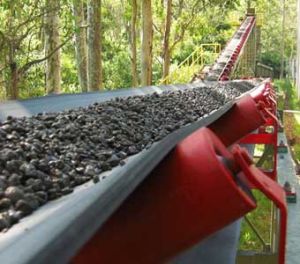
Belt Conveyor
A Belt Conveyor is a system of pulleys with a long loop of fabric or other material stretched between them. They are used to conveniently move heavy objects from one part of a processing facility to another. Belt Conveyor can be extremely complex or quite simple. The belt provides a continuous surface on which to place boxes or other objects.The inside of the belt is rough and strong, so as to stand up to the wear and tear of being pulled along by motorized wheels. The outer layer, which is the layer that workers use to convey materials, is usually softer and more impact resistant. It is common to treat it with some sort of non-skid surface, since there is no reason to take a chance that objects might bounce off if placed roughly or fall off if the conveyor has to take a turn. Rubber and plastic are both used for the belt material. Specialized Belt Conveyors Belt Conveyors have traditionally had difficulty navigating corners or tight turns. Most belt and pulley systems need to be in a straight line in order to function properly. However, most warehouses do not offer such clear paths between where the objects are and where they need to be conveyed to. In that situation, most complexes use a series of Belt Conveyorsystems. When there is a corner that must be gone around, they will design a series of small conveyors, each of which is at the appropriate angle to make the turn gently. Certain specialized Belt Conveyor systems, like the baggage carousels in an airport terminal, are designed to work at an angle. This is not an option in most workplaces. There is many more than one type of belt conveyor in use in an airport, and they each have their own unique function. Warehouses and packaging facilities use belt conveyors that are superficially similar to the conveyors used by airport baggage handlers to get checked luggage from the front desk to the airplane, but it is very rare for a business to need the combination of easy access from a diverse group of people and constant operation that inspired airport terminals to develop the baggage claim carousel. Most Belt Conveyors in the workplace are much simpler in function and less durable in material.
...more
Transmission Belts
Be first to Rate
Rate This